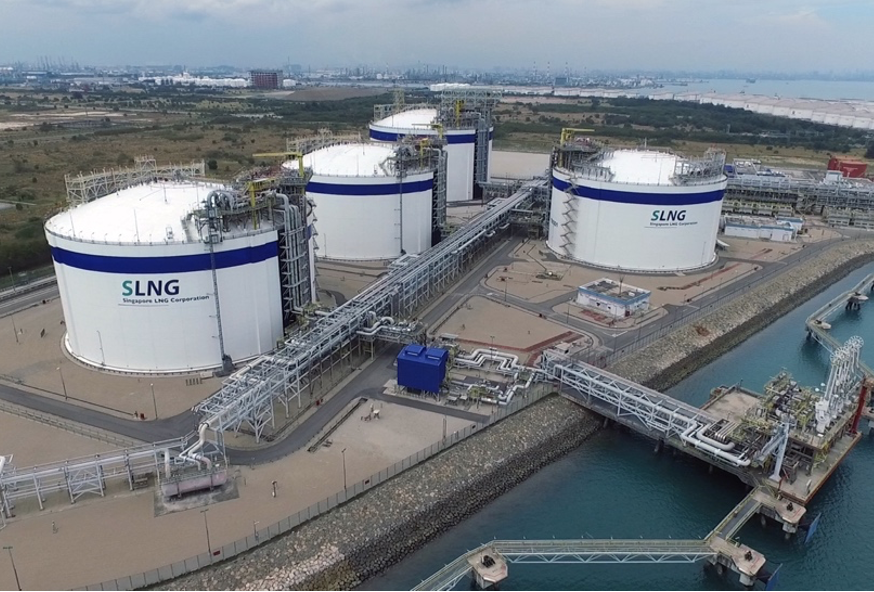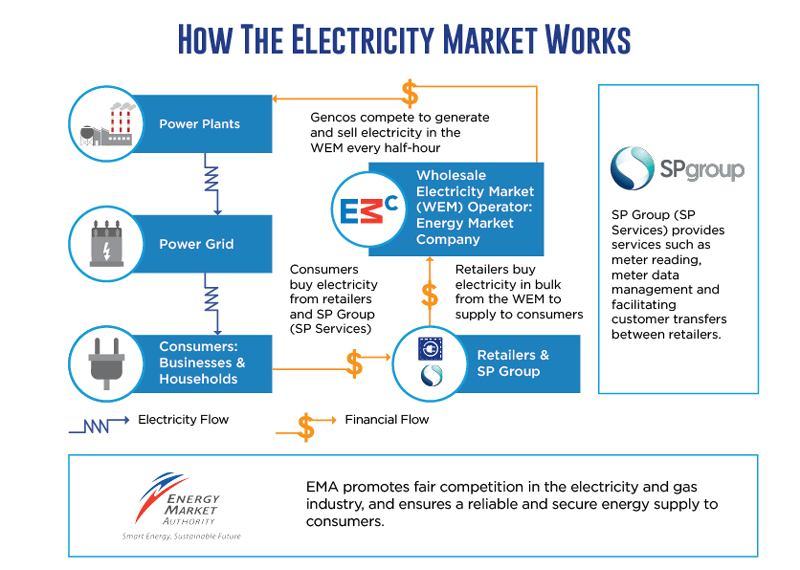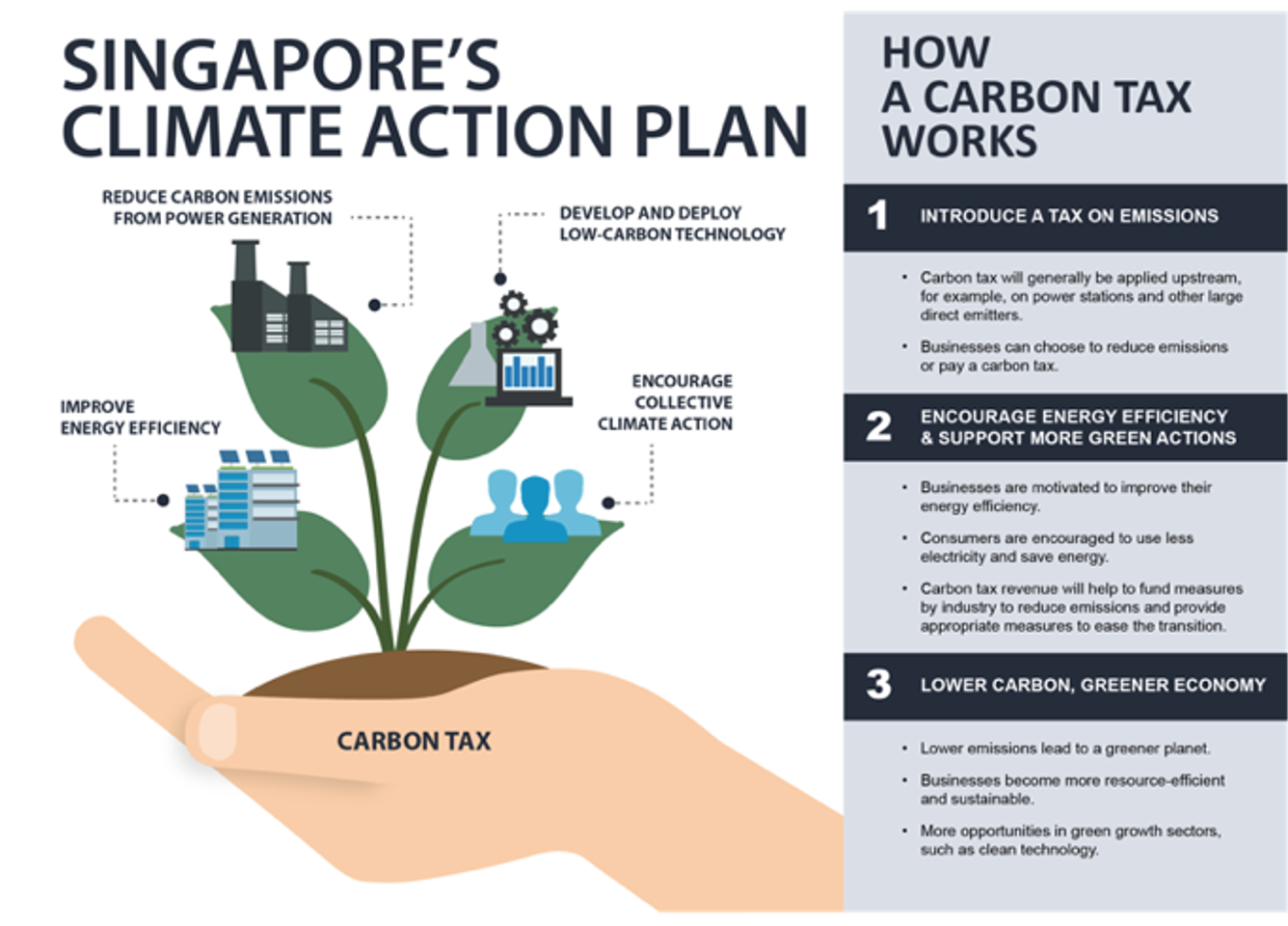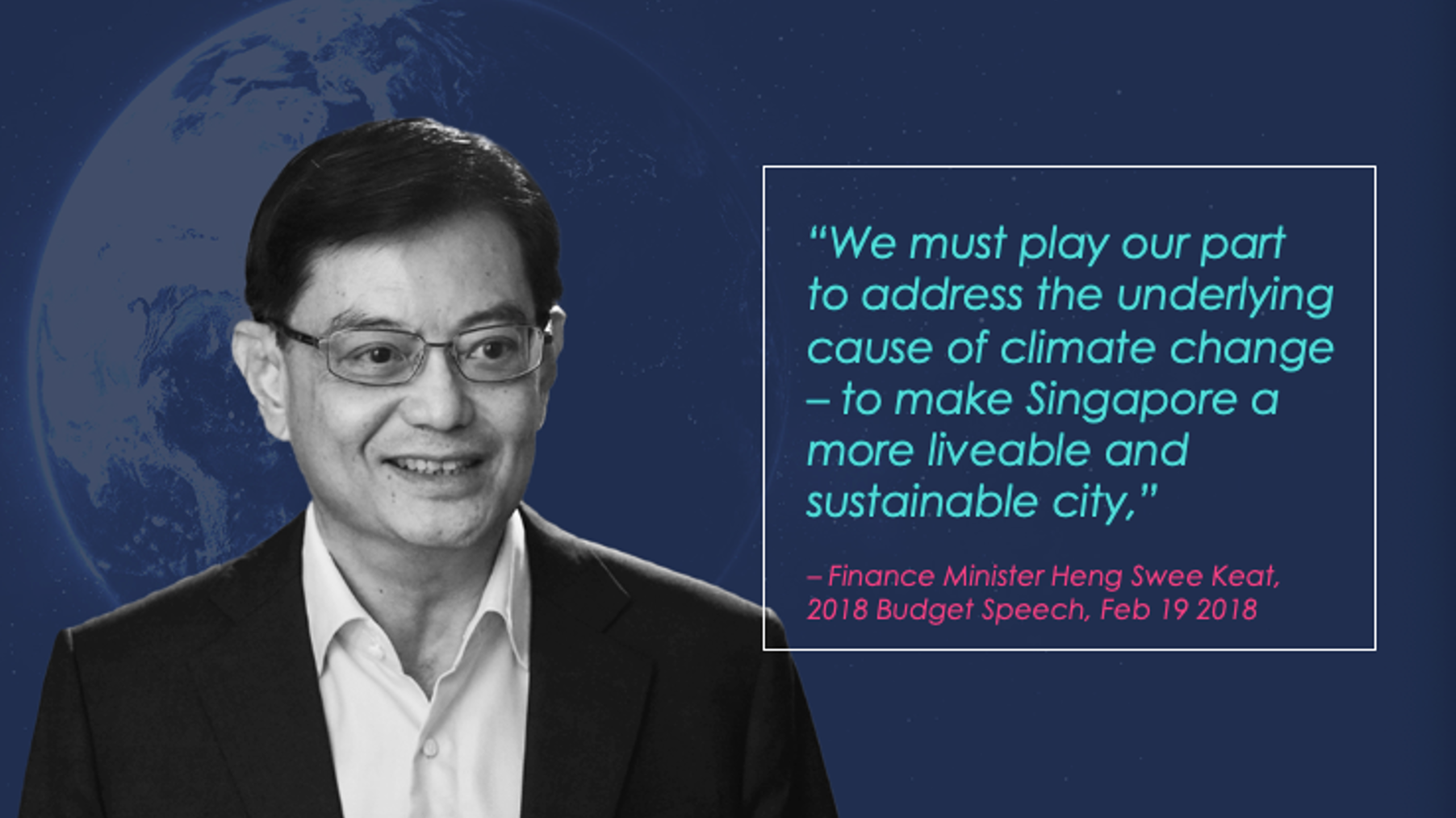Energy
Energy

Energy is a vital resource that is indispensable to a country’s development. But Singapore does not possess any significant energy resources of our own, and we depend heavily on energy imports to meet our domestic needs. Singapore’s energy mix
Liquified natural gas (LNG), the cleanest fossil fuel, supplies about 95 per cent of our electricity generation needs. Coal, oil, solar and waste supply the remaining 5 per cent of our energy needs.
In 2019, we used about 9,795 kilotonnes (ktoe) of energy to generate about 4,655 ktoe of electricity, numbers which have been steadily rising.
But while we can procure what we need to keep our economy going and our hour homes running, we cannot simply rely on buying ever-larger amounts of energy. Singapore has been paying careful attention to maintaining energy security, economic competitiveness, and environmental sustainability - also known as the “energy trilemma”.
Energy security
 Image: Singapore LNG
Image: Singapore LNG
Currently, more than 95 per cent of Singapore’s electrical supply comes from natural gas. Most of our natural gas is supplied through pipelines from Malaysia and Indonesia, which poses a key challenge: a lack of diverse energy sources. Six of the existing gas contracts with Indonesia and Malaysia are due to expire between 2018 and 2029, with no guarantee of renewal.
To reduce our over-reliance on just two main sources of natural gas, Singapore has been expanding its supplier base by developing LNG infrastructure.
In 2013, Singapore opened its first LNG terminal, a significant milestone in fortifying our energy security. This terminal allows LNG to be imported from around the world and stored locally, ensuring that Singapore’s energy needs can be met even if pipeline agreements are not renewed. Due to its success, plans are underway to construct a second LNG terminal in the east.

Economic competitiveness
With a high dependence on energy imports, especially LNG, Singapore has little control over energy prices. LNG prices closely track oil prices, the result of commercial contracts that link LNG to oil. And because oil prices are set by the market and oil producers, Singapore is highly exposed to any volatility that could affect oil prices.
For one thing, should oil prices rise quickly, there could be knock-on effects for the economy. A sharp price rise could quickly escalate costs for many businesses – and hurt Singapore’s economic growth prospects.
Singapore has been grappling with the challenge of balancing economic competitiveness. While other oil-importing countries can afford to subsidise high oil prices, this could lead to huge deficits for SingaporeSingapore should oil prices rise quickly. Hence, instead of subsidies, the Singapore government turned to competition to keep prices fair and affordable for both companies and households.
Since the 1990s, Singapore has been progressively allowing private companies into the electricity market to nudge providers to become more cost-effective and better serve customers. In 2018, Singapore introduced the Open Electricity Market, which allowed households to choose their electricity provider instead of buying from just one source.
 Image: Open Electricity Market
Image: Open Electricity Market
Environment sustainability
Beyond ensuring that energy sources are available and are priced affordably, we also focus on sustainability. The threat of climate change has severe repercussions for Singapore and Singaporeans. In addition to warmer days and erratic weather, we also face the bigger threat of but it’s rising sea levels that poses.
Hence, we continue to push towards cleaner and renewable energy. For instance, over the last decade, the number of grid-connected solar installations in Singapore has increased from 30 to 3,000. By 2025, we aim to utilise 1.5 gigawatt-peak of solar energy – enough to power about 260,000 households annually.
We cannot expect solar to fully replace LNG – even if all of Singapore was covered with solar panels, solar would still not produce enough energy for all our needs – but we will continue to try to use more clean energy to reduce our carbon footprint.
In 2019, then-Minister for Trade and Industry Chan Chun Sing announced that Singapore would ramp up our solar energy output even though it will be challenging.

Innovation lies at the heart of our clean energy push. Solar technology now may not be efficient, but with research and development and a drive to experiment and think out of the box, we hope we will be able to fully harness the sun’s power for our energy needs.
We are also looking into new and emerging sources of energy. Singapore’s Four Switches is a long-term plan that looks to pivot Singapore towards clean energy such as solar, regional power grids, and emerging technologies such as hydrogen fuel cells.
The Energy Market Authority (EMA) is constantly encouraging innovation within the industry by test-bedding projects and programmes. For instance, it launched the inaugural Singapore Energy Grand Challenge in 2020 to develop new technologies and solutions to strengthen Singapore’s energy efficiency and security.
But the reality is that any choice we make will involve trade-offs. Reducing carbon emissions will inevitably set “real cross-cutting constraints” on development, said Senior Minister Teo Chee Hean, who also chairs the Inter-Ministerial Committee on Climate Change. “The trade-offs are real, and often the choices are difficult,” he added.
For instance, Singapore became the first country in Southeast Asia to introduce a carbon tax in 2018 – a move that will look to reduce carbon emissions across all sectors. Raising taxes will hopefully nudge companies to move towards cleaner energy and operations. But any new tax will hurt companies and potential affect Singapore’s economic growth prospects in the long run.
 Image: NCCS
Image: NCCS
Despite the sacrifices, switching to sustainable energy sources is necessary to secure the country’s long-term future.


